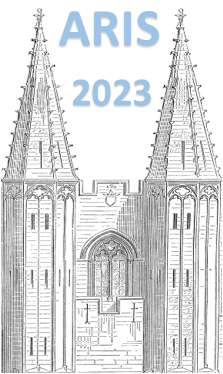Orateur
Description
The 208Pb nuclide is the heaviest known doubly-magic nucleus. Information on its neutron-rich neighbourhood is rather scarce, due to the limited mechanisms by which these nuclei can be populated. However, experimental information on neutron-rich N=126 nuclei is of paramount importance not only for nuclear structure physics, but also for implications for astrophysics. Theoretical predictions for exotic nuclei in this region are essential inputs into nucleosynthesis calculations, influencing the yields in the A~195 r-process peak.
Neutron-rich nuclei around 208Pb are under intense scrutiny. However, no B(E2;2+->0+) transition strength was extracted on any of the N=126 nuclei below 208Pb. This quantity, connected to the wave functions of the involved states, often provide the first hint of the erosion of the magicity by exhibiting enhanced collectivity.
The radioactive semi-magic two proton-hole 206Hg nucleus was Coulomb excited for the first time at a safe beam energy using the HIE-ISOLDE facility at CERN [1]. Two gamma rays depopulating low-lying states in 206Hg were observed. The determined reduced transition strength B(E2;2+->0+) of the 1068 keV transition is in line, but slightly lower, than the shell-model predictions. Furthermore, a collective octupole state was identified, and the corresponding transition strength of was extracted. The obtained results were confronted with large scale shell model and time-dependent Hartree-Fock calculations, and are crucial for furthering understanding of both quadrupole and octupole collectivity in the neutron-rich vicinity of the heaviest doubly-magic nucleus 208Pb.
The most exotic N~126 nuclei studied so far were populated in fragmentation reactions at GSI (see e.g. [2,3]). Within the FAIR-0 experimental campaign a number of such studies will be performed within the DESPEC (Decay Spectroscopy) collaboration in spring 2022. An experiment aimed at the beta decay and isomeric decays of the most neutron-rich N=126 nuclei presently accessible, 202Os and 203Ir took place May 2022. The obtained statistics is an order of magnitude higher than previously [2].
The status of knowledge on neutron-rich N=126 nuclei will be presented. This will include the new results on the Coulomb excitation of 206Hg, and hopefully isomeric decays in 202Os, as well as recent works on the competition between allowed and first-forbidden beta decays [4].
[1] L. Morrison et al., Phys. Lett. B 838, 137675 (2023)
[2] S.J. Steer et al., Phys. Rev. C 84, 044313 (2011).
[3] A.I. Morales et al., Phys. Rev. Lett. 113, 022702 (2014).
[4] R.J. Carrol et al., Phys. Rev. Lett. 125, 192501 (2020)

